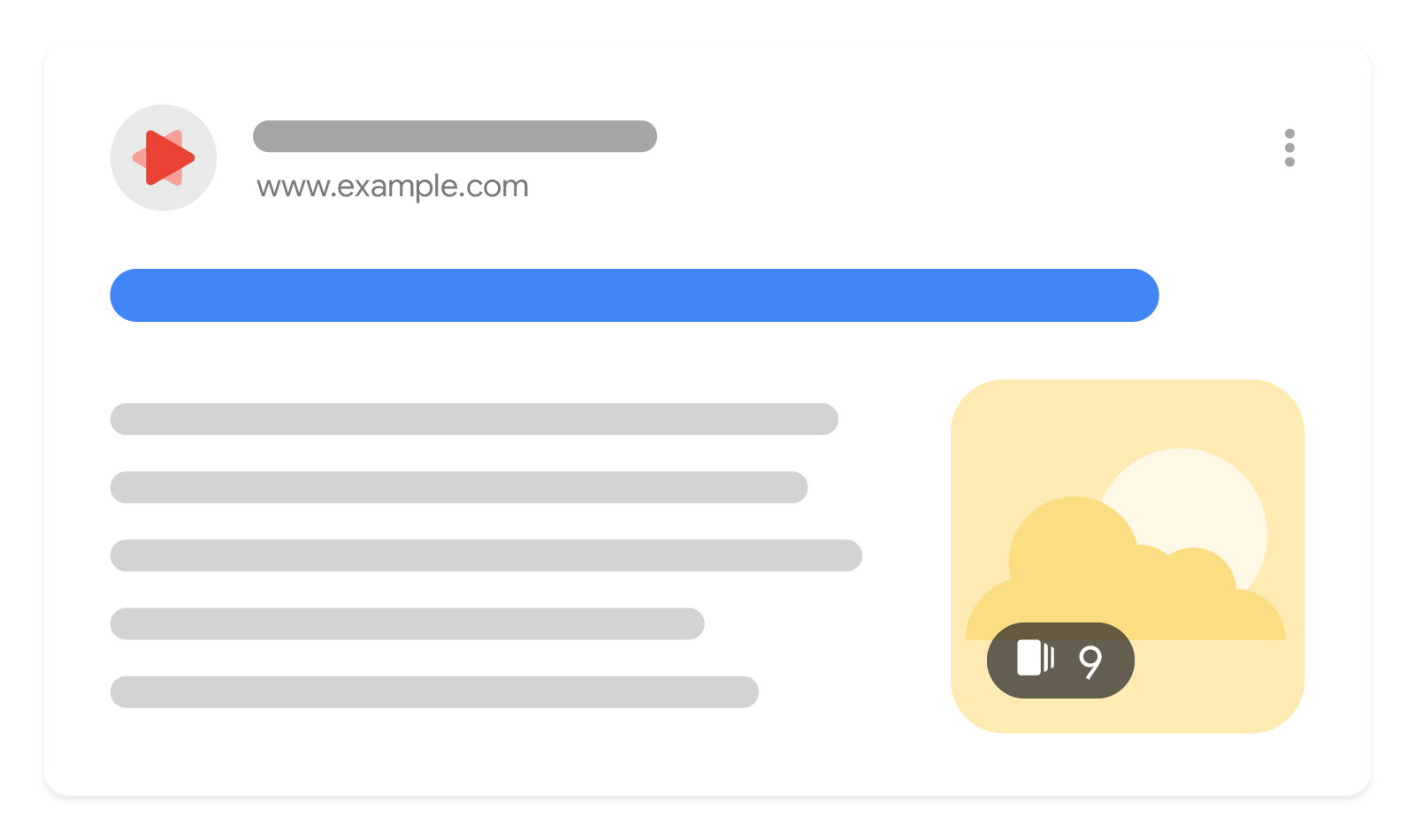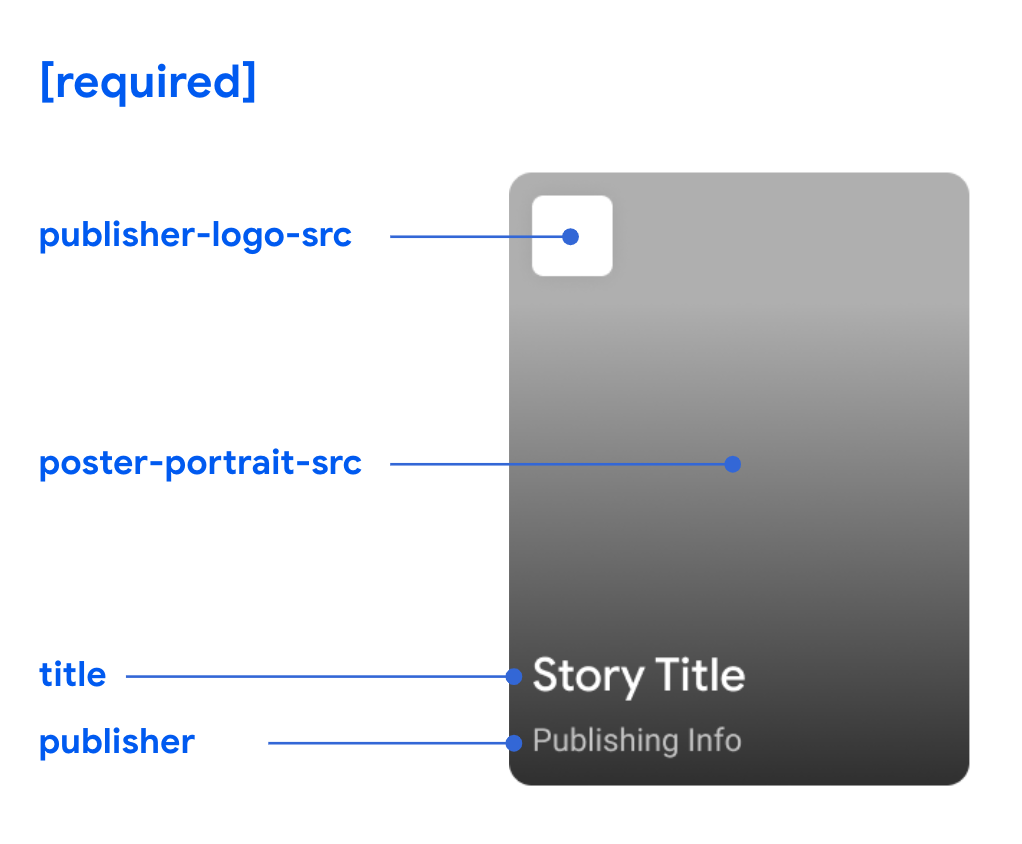Attivare le Storie web su Google

Le Storie web sono una versione basata sul web delle "storie", un popolare formato che unisce video, audio, immagini, animazione e testo per creare un'esperienza di fruizione dinamica. Questo formato visivo consente di esplorare i contenuti al proprio ritmo toccandoli o facendoli scorrere.
Questa guida spiega come rendere le tue Storie web idonee alla visualizzazione nella Ricerca Google (compreso Feed personalizzato).
Ecco una panoramica relativa a come attivare le Storie web su Google:
- Crea la Storia web.
- Assicurati che la Storia web sia in formato AMP valido.
- Verifica i metadati.
- Verifica l'indicizzazione della Storia web.
- Segui le norme relative ai contenuti delle Storie web.
Disponibilità della funzionalità
Le Storie web possono essere visualizzate come singolo risultato nella Ricerca Google, disponibile in tutte regioni e lingue in cui è disponibile la Ricerca Google.
Nel Feed personalizzato, le Storie web possono essere visualizzate come singola scheda in cui puoi toccare e spostarti nella storia. Anche se questo aspetto è disponibile in tutte le regioni e per tutte le lingue in cui è disponibile Google Discover, è più probabile che venga visualizzato negli Stati Uniti, in India e in Brasile.
Creare la Storia web
Le Storie web sono di fatto delle pagine web e devono seguire le stesse linee guida e best practice previste per la pubblicazione delle pagine web standard. Puoi iniziare in due modi:
- Scegli uno dei vari strumenti per l'editing delle storie per iniziare a creare storie senza dover scrivere codice.
- Se hai conoscenze tecniche, puoi iniziare usando le pagine AMP. Per assicurarti che la tua Storia web venga visualizzata correttamente, ti consigliamo di utilizzare gli Strumenti per sviluppatori di Chrome per simulare dimensioni e formati di diversi dispositivi.
Per assicurarti di non avere problemi, consulta le best practice per la creazione di Storie web.
Assicurarsi che la Storia web sia in formato AMP valido
Dopo aver sviluppato la Storia Web, assicurati che sia in formato AMP valido. Una storia AMP valida è conforme alle varie specifiche AMP. In questo modo, la storia viene pubblicata tramite AMP Cache e assicura prestazioni ed esperienza ottimali per gli utenti. Puoi utilizzare i seguenti strumenti per assicurarti che la Storia web sia in un formato AMP valido:
- Strumento di test delle Storie web di Google: verifica che la Storia web sia valida.
- Strumento Controllo URL: controlla che la Storia web sia in un formato AMP valido, oltre allo stato di indicizzazione su Google di un URL.
- AMP Linter: convalida le Storie web in fase di sviluppo tramite riga di comando.
Verificare i metadati
Affinché le tue Storie web siano idonee per la visualizzazione nella Ricerca Google o in Google Discover, fornisci i metadati necessari per la loro visualizzazione nell'anteprima.
- Fai riferimento all'elenco completo dei metadati.
- Verifica che l'anteprima della Storia web venga visualizzata correttamente nello strumento di test delle Storie web di Google.
Ricorda che i seguenti campi sono obbligatori per ogni Storia web: publisher-logo-src, poster-portrait-src, title e publisher.

Verificare l'indicizzazione della Storia web
Verifica se la Ricerca Google ha indicizzato la tua Storia web. Usa lo strumento Controllo URL per inviare URL specifici o verifica lo stato di un URL utilizzando il report Indicizzazione delle pagine o il report Sitemap. Se la tua Storia web non è indicizzata:
- Per consentire a Google di trovare più facilmente la tua Storia web, aggiungi un link alle Storie web sul tuo sito o l'URL della Storia web nella Sitemap.
- Tutte le Storie web devono essere canoniche. Assicurati che ogni Storia web abbia un elemento
link rel="canonical"che reindirizzi a se stessa. Ad esempio:<link rel="canonical" href="https://www.example.com/url/to/webstory.html"> - Verifica che l'URL della Storia web non sia bloccato per Googlebot tramite robots.txt o tag
noindex.
